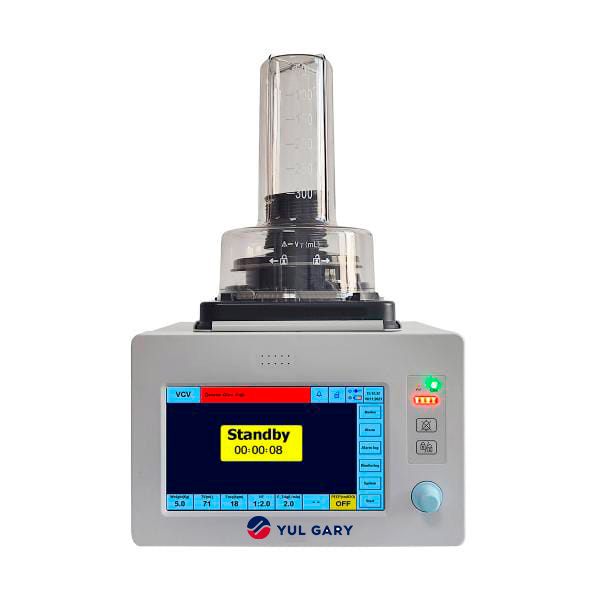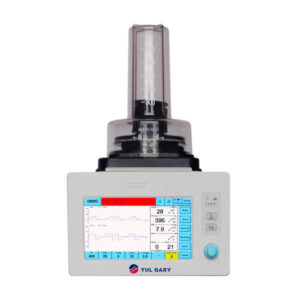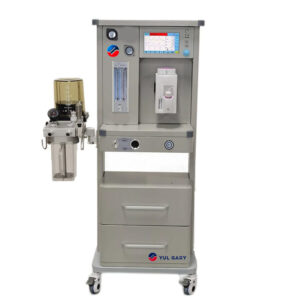Description
The Turbo-driven Veterinary Anesthesia Ventilator YG0376 offers cutting-edge respiratory support tailored for various veterinary surgical procedures. This advanced system ensures precise anesthesia management and can operate efficiently with just an oxygen concentrator, eliminating the need for a high-pressure air source. Ideal for veterinary hospitals, animal clinics, research institutions, wildlife rescue centers, and veterinary schools, this device’s innovative turbo-driven technology facilitates smooth operations. Its compact and lightweight design also makes it a perfect fit for space-restricted veterinary facilities.
Market Price
The Turbo-driven Veterinary Anesthesia Ventilator YG0376 is a premium product in the market, boasting features like multi-mode ventilation and automation based on animal weight. Positioned between $4,220 and $4,225 USD, the price may vary with optional accessories, service agreements, and supplier choice. The investment is justified by its precision, automation, and robust safety systems, offering unparalleled value in veterinary hospitals, research institutions, and wildlife rescue settings.
Frequently Asked Questions
- What animals can the ventilator support?
It is versatile and designed for a wide range of animals, from small pets to large mammals, with tidal volume adjustments ranging from 20 to 1500ml.
- Does it require a compressed air source?
No, thanks to the turbo-driven technology, it only requires an oxygen concentrator for efficient operation.
- Can it automatically adjust ventilation parameters?
Yes, it calculates and adjusts settings based on the animal’s weight, reducing the risk of human error.
- How does it ensure safety during anesthesia?
It features multiple alarms for high/low pressure, power failure, and oxygen supply loss, providing real-time monitoring of critical parameters.
Advantages and Disadvantages
Advantages:
- Turbo-driven operation eliminates the need for high-pressure air.
- Compact and lightweight design conserves space in veterinary facilities.
- Automatic ventilation adjustments minimize human error.
- Offers multiple ventilation modes for various clinical scenarios.
- SPONT mode activates automatic ventilation if spontaneous breathing discontinues.
Disadvantages:
- Higher initial investment compared to basic veterinary ventilators.
- Requires regular calibration and monitoring for long-term reliability.
- Advanced features might need specialized training for best use.
Product Usage in the Field
Essential for veterinary surgical centers, emergency units, and research facilities, the YG0376 Veterinary Anesthesia Ventilator offers critical respiratory support in both routine and complex anesthesia procedures. Its flexibility and efficiency allow it to adapt seamlessly to various clinical scenarios, ensuring safety and reliability.
Recommendations
For optimal performance and longevity, regular calibration and maintenance of the Turbo-driven Veterinary Anesthesia Ventilator YG0376 are crucial, especially concerning its pressure sensors and ventilation parameters. Veterinary professionals should be properly trained to operate its sophisticated turbo-driven system effectively. Regular testing of alarm functions is recommended to ensure patient safety during anesthesia. Integrating the ventilator with reliable oxygen concentrators and ensuring proper connectivity with other anesthesia machines will further enhance its efficacy in clinical settings.
Technical Specifications
| Model | YG0376 |
| Tidal volume (TV) | 20-1500ml |
| Breathing rate (Freq) | 1-150bpm |
| Spontaneous breathing rate (Freq_Spont) | 0-150bpm |
| Ratio of inhalation and exhalation (I:E) | 9.9:1-1:9 adjustable |
| Hold time | 0-50% |
| Flow trigger sensitivity (F_Tring) | 0.5-20L/min, OFF |
| Pressure Trigger Sensitivity (P_Tring) | -1-20cmH2O, OFF |
| End-expiratory pressure | 3-20cmH2O, OFF |
| SIMV frequency (Fre_SIMV) | 2-60bpm |
| Inspiratory time (T_Insp) | 0.1-12s |
| Pressure support (PS) | 0-60cmH2O |
| Inspiratory pressure (T_Insp) | 0-60cmH2O |
| Tidal volume of expiratory | 0-2500ml |
| Tidal volume of inspiratory | 0-2500ml |
| Minute Ventilation (MV) | Display range: 0-99L/min Use range: 0-25L/min |
| Spontaneous minute ventilation (MV_Spont) | Display range: 0-99L/min Use range: 0-25L/min |
| Peak pressure (Ppeak) | 0-80cmH2O |
| Platform pressure (Pplat) | 0-80cmH2O |
| Mean pressure (Pmean) | 0-80cmH2O |
| Inhaled oxygen concentration (FiO2) | 15-100% |
| End-expiratory pressure (PEEP) | 0-20cmH2O |
| Driving gas pressure (Press_Drive) | 0-900kpa |
| Paw-T waveform | Pressure monitoring range: 0~120cmH2O; X-axis: 0~10s |
| Flow-T waveform | Y-axis:-1800~180L/min X-axis: 0~10s |
| V_T waveform | Z-axis:0~2000L/min X-axis:0~10s |






